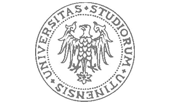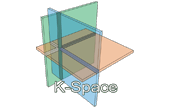MPEG-7 Library Users: Projects
Preservation towards storage and access. Standardised Practices for Audiovisual
 Contents in Europe.
Contents in Europe.
MPEG-7 is used to improve reusability of video content in the broadcast domain. It is used for describing the temporal video structure (story, shot), for low-level AV feature description, for high-level semantic and textual annotations. A video annotation (documentation) tool based on MPEG-7 is developed. Video and film quality (noise, dust blocking, sharpness,..) is described in a temporally detailed way.
Knowledge Space of Semantic Inference for automatic annotation and retrieval of Multimedia Content
MPEG-7 is used for standardised AV metadata exchange between advanced automatic audiovisual content analysis tools and semantic tools (semantic inference and search).
New Media for a New Millennium. Production of non-linear media for broadband.
MPEG-7 is used for low- and mid-level feature description (shots, camera motion, color features, faces) of clips. In connection with semantic annotations, the low-level features are used to infer the presence of objects.
Discovering, inter-relating and navigating cross-media campaign knowledge.
MPEG-7 and the library are used in order to store and share multimodal low-level analysis results amongst various distributed components.
Media Monitoring and multi-modal analysis for time critical decisions
DIRECT-INFO uses MPEG-7 to describe a number of features extracted from sports broadcasts, which are used to infer information about sponsorship, such as occurrence of logos, text inserts, close-ups of people, spoken text, etc.
Integrated Project Research Area Cinema. Improving the digital cinema production workflow “from scene to screen”.
MPEG-7 is used as metadata format in the postproduction phase. The various kinds of metadata that are created in different production stages (low-level camera metadata, textual annotations, tracking information etc.) are mapped to MPEG-7, which serves as a hub between the different metadata formats used in the process.
Content Analysis and Network DELivery Architectures
The MPEG‑7 library was used within the project.
See: www.hitech-projects.com/euprojects/candela/pr.htm
Publication: “CANDELA – Storage, Analysis and Retrieval of Video Content in Distributed Systems: Real-time Video Surveillance and Retrieval”, Proc of Int. Conf. for Multimedia and Expo ICME.
Measurable Intelligent and Reliable Semantic Extraction and Retrieval of Multimedia Data
Uses MPEG-7 to store audiovisual metadata of meeting videos, audio recordings and slide presentations.
MPEG-7 Library Users: Institutions
The Media Processing Group at Docomo Euro Labs is using the MPEG-7 Library and the AVDP profile for the description of low- and high level features of user generated content in mobile scenarios. They aim at reducing the overall burden of service adoption for users of services like picture or video sharing by integrating new concepts of content recognition and smart content processing.
Università degli Studi di Udine
Artificial Vision and Real Time Systems (AVIRES)
Application of our MPEG‑7 library within surveillance and content analysis projects.
“We would really like to compliment all of you working on this project for the terrific job. And thank you for the support you are providing.” (Dr. Lauro Snidaro)
Radiotelevisione Italiana – Centre for Research and Technological Innovation
RAI is currently porting our MPEG‑7 library to Linux platform and will utilise the library for the structural and low-level feature description of broadcast material in an archive environment.
Electrical & Computer Engineering, Concordia University, Montreal, Canada.![]()
The video processing (vidpro) group at Concordia University is porting our MPEG-7 library to Linux Fedora Core-4 and will utilise the library to describe high-level features for video surveillance applications.
Bergische Universität Wuppertal
DMT – Print and Media Technologies, Bergische Universität Wuppertal.![]()
Bachelor thesis on “Metadata for integrated publication systems in MPEG‑7” (German)
Download the thesis via:






